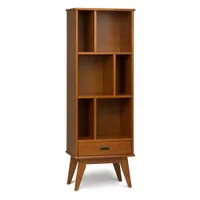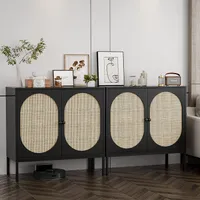'It makes a dining room complete' – 9 schemes that’ll convince you a buffet is exactly what your space needs
Dining room buffets make entertaining a breeze, while also keeping clutter at bay. Here's why your dining space would benefit
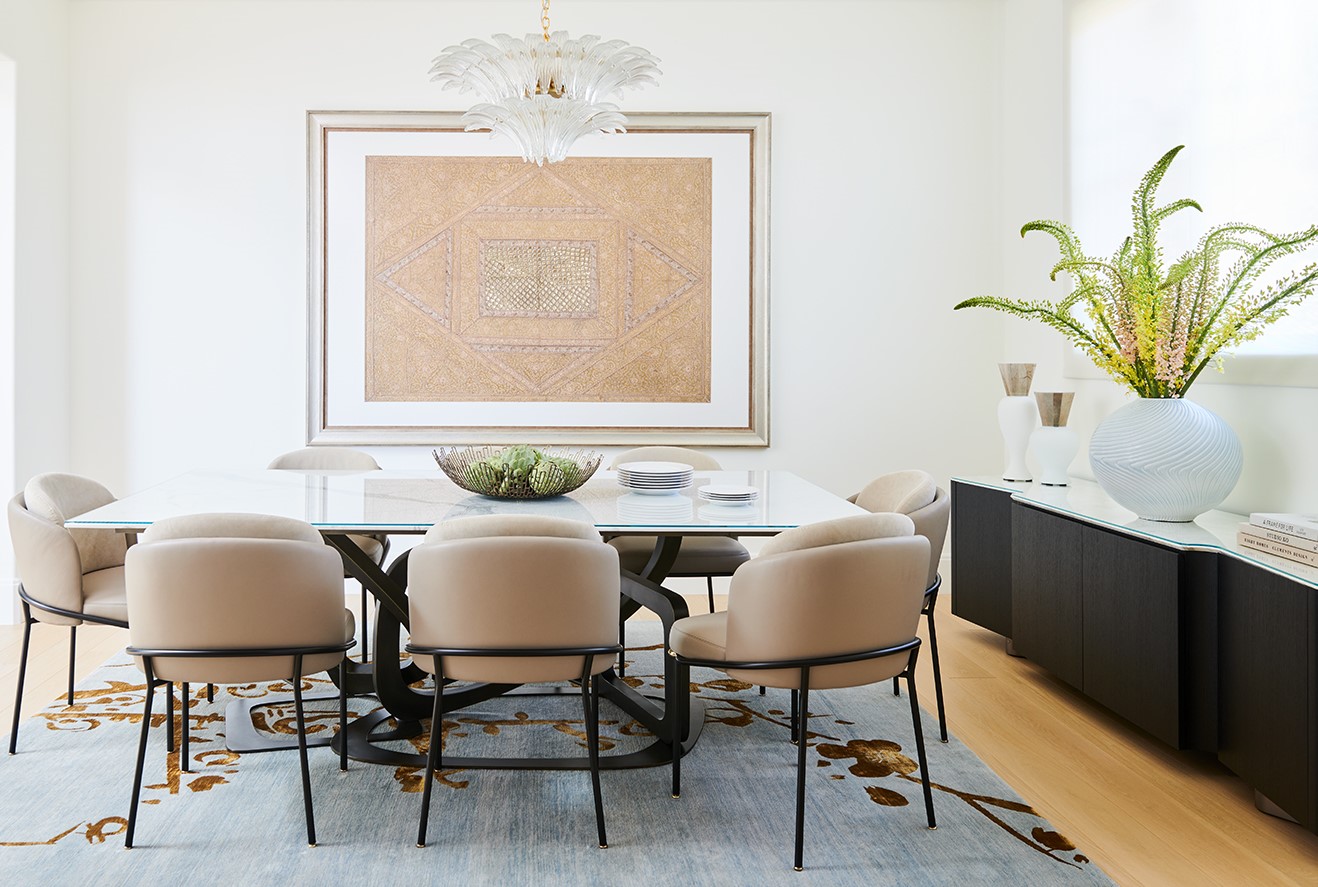

Buffets in dining rooms, whether built-in or freestanding, have been part of residential interior design for hundreds of years. This piece of furniture, whether a china cabinet, a sideboard (recessed into the wall or not), or a console allows you to live large in a dining room of any size.
Not only do buffets offer space to keep bowls, plates, and glasses, but they also provide serving space for food before it lands on the dining table. When not in use, they also offer up space for decor as well, becoming the perfect display spaces for beautiful vignettes.
Whether you're considering adding a buffet to your dining room, or you've neve considered this piece of furniture for your space, these designs offer up the inspiration you need to convince you it's the best investment you can make for this room.

Aditi is a homes writer and editor with several years of experience. Her articles, backed by expert insights, offer suggestions aimed at helping readers make the best home design choices. For this article, she spoke to several designers to understand ways to add a buffet to a dining room.
9 scrumptious ideas for buffets in dining rooms
Ever wondered where the concept of a buffet originated? Scandinavians claim that the idea originates from the brännvinsbord or Swedish schnapps that were laid out on a table back in the 16th century as a ritual. That's where the Swedish 'smorgasbord' was born.
Later, the French borrowed the concept and developed the buffet table concept to show off their finest silverware. Over time, meals were laid out upon it, and came to be known as 'buffet meals'. Today the buffet is a flexible term, meaning a meal that is laid out on a table next to the main seating. Or a storage unit where all the chinaware goes.
1. Go for a wall to wall built-in buffet
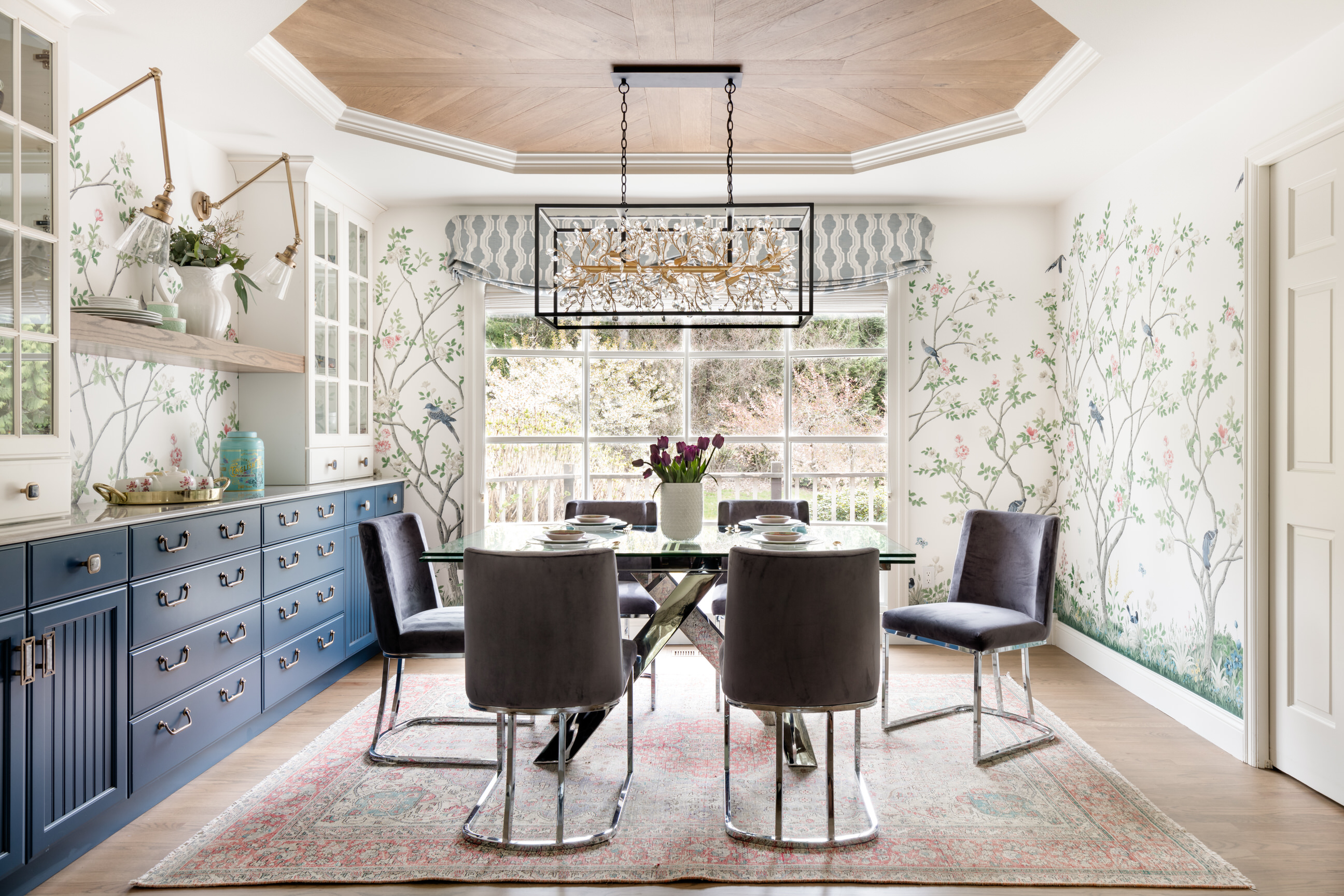
A large buffet like this can handle your entire Christmas or New Year spread. A wall-to-wall concept is especially useful in a small dining room that could do with sumptuous storage. Just make sure the size of your buffet does not overwhelm the room or the dining table.
'A whimsical English garden was the foundation and driving force for the design inspiration,' says Amanda George, founder of Amanda George Interior Design. 'A lingering garden mural wraps all the walls floor to ceiling, while a union jack wood detail adorns the existing tray ceiling, as a nod to the client’s English roots. Custom heritage blue base cabinets and antique white glass front uppers create a beautifully balanced built-in buffet that stretches the east wall providing display and storage for the client's extensive inherited China collection.'
The Livingetc newsletters are your inside source for what’s shaping interiors now - and what’s next. Discover trend forecasts, smart style ideas, and curated shopping inspiration that brings design to life. Subscribe today and stay ahead of the curve.
To update your built-in storage, remember, a coat of glossy paint or lacquer paired with the right hardware can freshen up the most tired of pieces.
2. Instead of a sideboard, consider a large storage unit on the wall
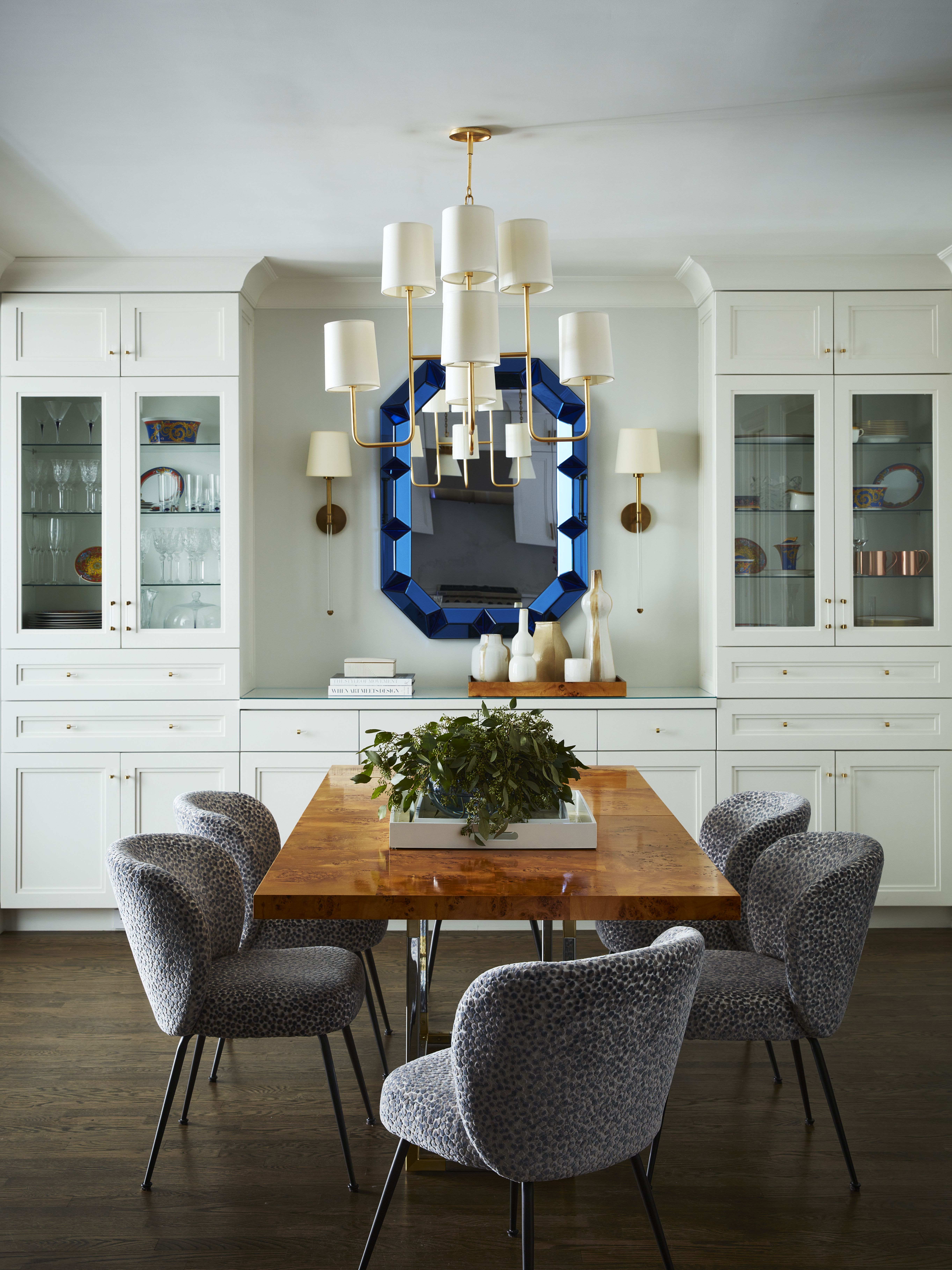
While designing a dining room, choose a large, built-in buffet, which is the perfect pretty yet practical unit. It allows you to display decorative objects, and provides extra storage for all your dining room needs.
Choosing glass-fronted cabinets will make the unit feel less bulky, while also allowing you to show off your most stylish servingware.
3. Use the sideboard for decor and crockery
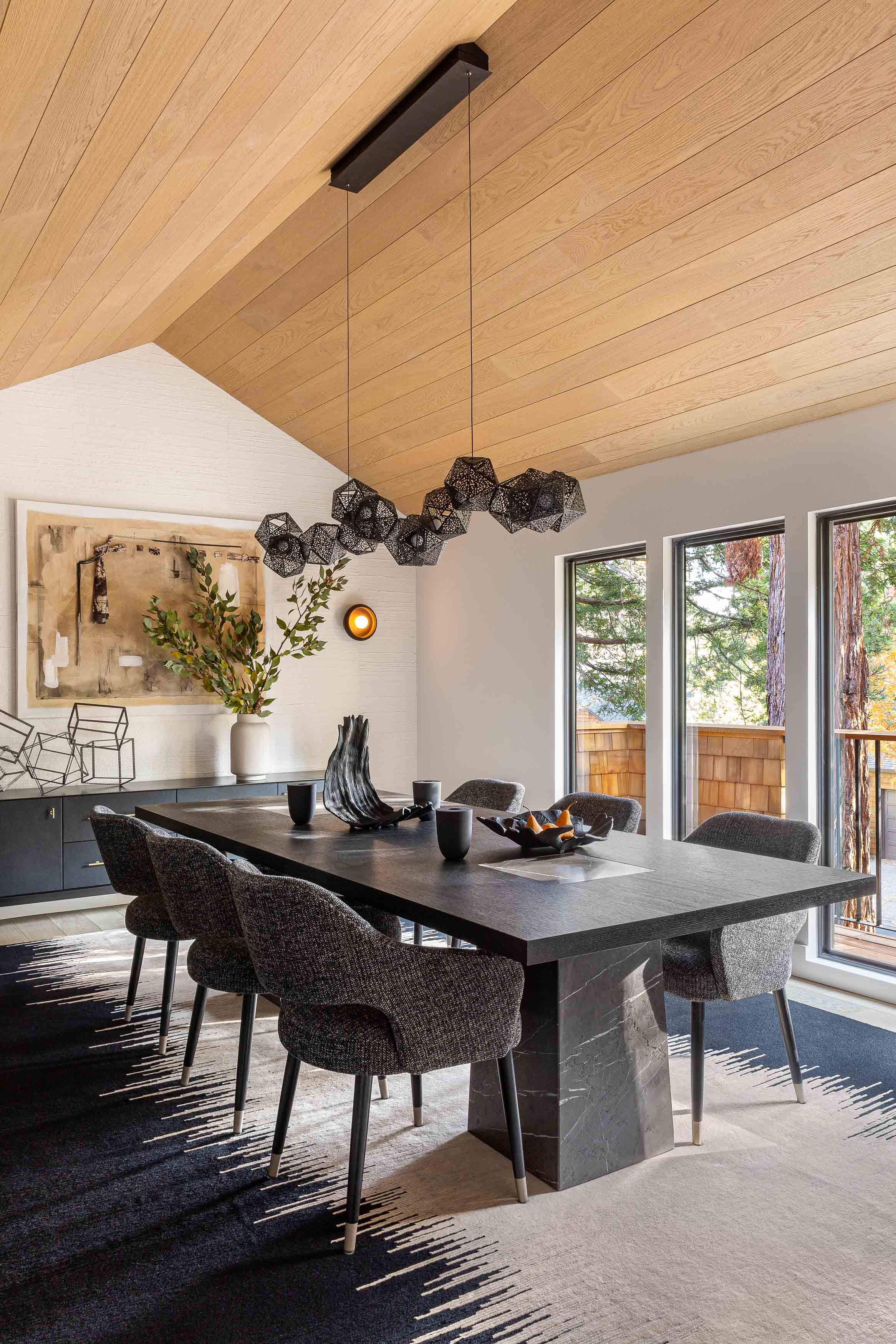
Today the sideboard is a widely used furniture piece, and a stylish storage idea for every room, not just the dining. The long, low-storage piece is available in a mind-boggling array of styles, with mirrored or glass-front doors, high-gloss lacquered finishes, and more. Due to its short height, it doesn't take up much space, and stands against a wall, like a credenza, offering functionality.
'What makes a dining room complete is the addition of a buffet,' says Kimberley Harrison, founder of Kimberley Harrison Interiors. 'For this dining space, the clients wanted a modern and sleek look, and to add warmth and function to the space, we selected a modern Croft House leather-wrapped console with industrial steel. It is not only a beautiful piece of furniture but also serves as additional tabletop and service space and allows the client extra storage space. A buffet is an ideal addition to just about any room in your home.'
4. Don't have a buffet? Utilize the kitchen counter as one

If you have a kitchen diner and don't have space to add an extra sideboard, look at what's available. Kitchen countertops are long and waist high or a bit lower, ideal for placing food and crockery. Even the cabinets below and above can be used for storage, making them ideal dining room storage units.
Choose interesting paint colors for the cabinets to make them the hero of the kitchen and the dining. Remember to not overcrowd the counter space, as an open plan like this can very quickly look cluttered and chaotic.
5. Bring in a console

Consoles are flexible pieces that can be used around the house, often in entryways. These provide the perfect spot to set the tone for your home – and add style as you enjoy a hearty meal with friends. They can be used to add console table decor, provide storage, and ensure you'll always know where your kitchen and dining things are.
'Eclectic and sculptural was the theme for this music executive’s dining room,' says Kendra Nash, founder of Nash Design Group. 'He wanted each piece to be a conversation piece while also being quite functional as he entertains the who’s in the music industry. Having a linear console was of the utmost importance so it could serve as an additional landing point – serving dishes, layers of light, floral arrangements, etc.'
6. Merge a tall storage unit with a wall for that built-in look
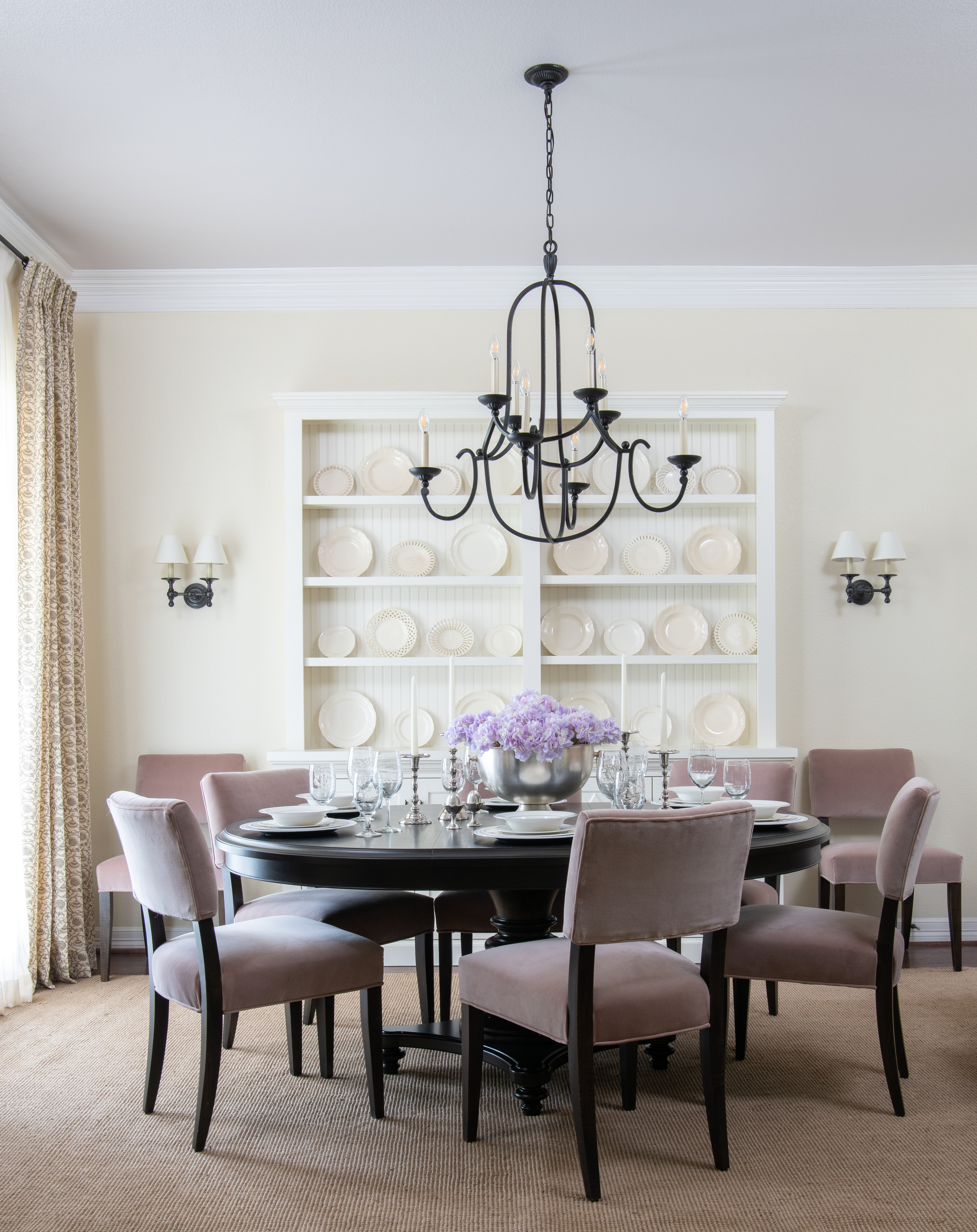
Instead of a table or a console, if you feel your home has more items that need to be stored, or if you have an open floor plan, then a tall, vertical unit could be your thing.
To create a built-in look, consider matching the unit with the dining room color scheme; especially the walls. This way the storage unit won't look bulky yet will store all your tchotchkes.
7. Use the spirits cabinet as a sideboard

A sideboard or a buffet is a timeless and versatile furniture piece. It's somewhat lean, and a great addition to any room, offering the perfect opportunity for self-expression through curated and varied vignettes.
If you have space, consider two dainty units, in natural wood to give the dining room an earthy look while increasing functionality. If you are a wine or spirits connoisseur, then consider placing all your choicest bottles here. Have more space? Maybe convert it into a wet bar, so it becomes a one-stop for all alcohol pouring, serving, and cleaning needs.
Hardwood Mid Century Storage Unit, Target
This solid rubberwood storage unit is a sleek, tall unit that can fit into any space, and offers storage opportunities for your choicest spirits or decor items.
8. Use the dining room library as a storage space
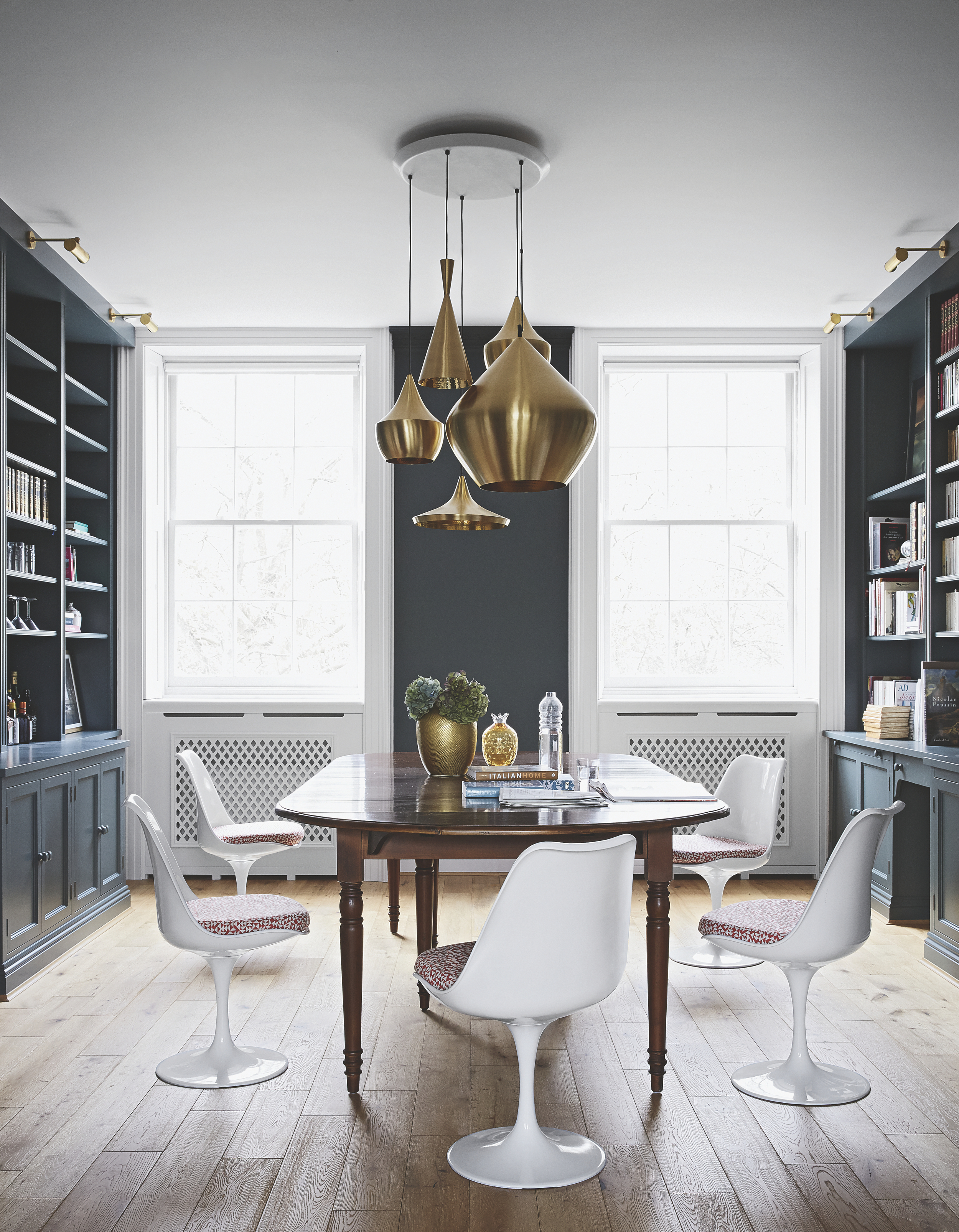
If you're lucky enough to have a home library, situated within your dining room, give it a secondary role as a buffet. Clear out the lower cabinets and counter space to serve food, or to display your china.
This will encourage guests to take a look around the room, and pay attention to your robust collection of paperbacks, as they help themselves to your sumptuous spread. Consider placing your books in a rainbow theme or by genre, so it's easy for people to go through the collection, and even pick out books they'd like to peruse later.
9. Choose a sideboard with an interesting materiality
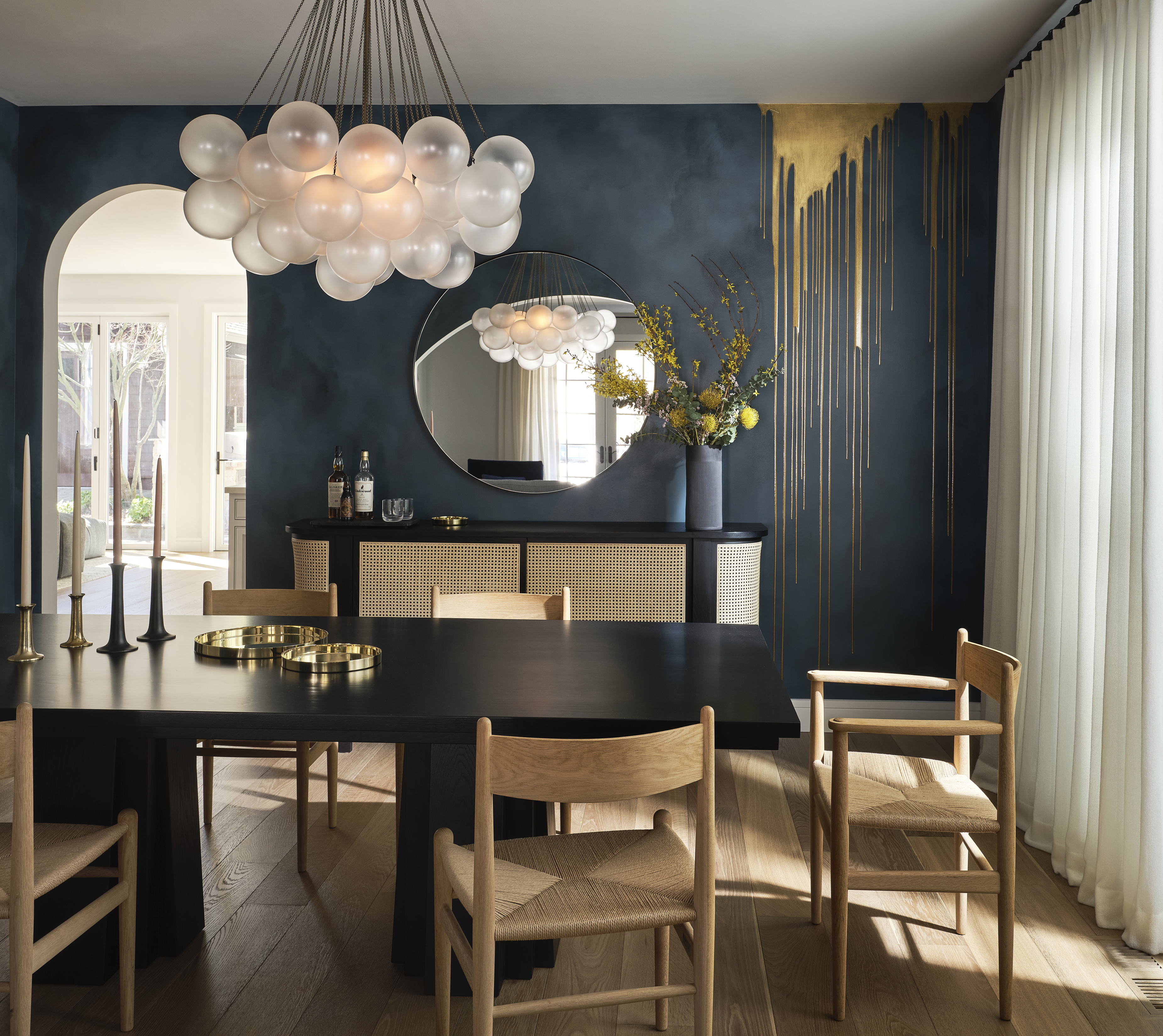
For a luxurious dining room, pay close attention to the materiality of the space. Customize pieces in interesting textures and materials, and have one hero piece that anchors the style of the room.
'The buffet selection in a room can be the showstopper piece or the more utilitarian piece that takes a backseat to the table,' says Kristen Pena, founder of K Interiors. ; We often like to make the buffet the hero because there is so much more versatility to the materials it can be made of, the way it can be oriented, and the show-off power it can have.'
IKIFLY Storage Sideboard, Amazon
This black-painted cabinet with rattan doors looks stylish yet has a classic, earthy touch to it. Spacious and practical, it's the perfect addition to any apartment.
How do you decorate or stage a dining room buffet?
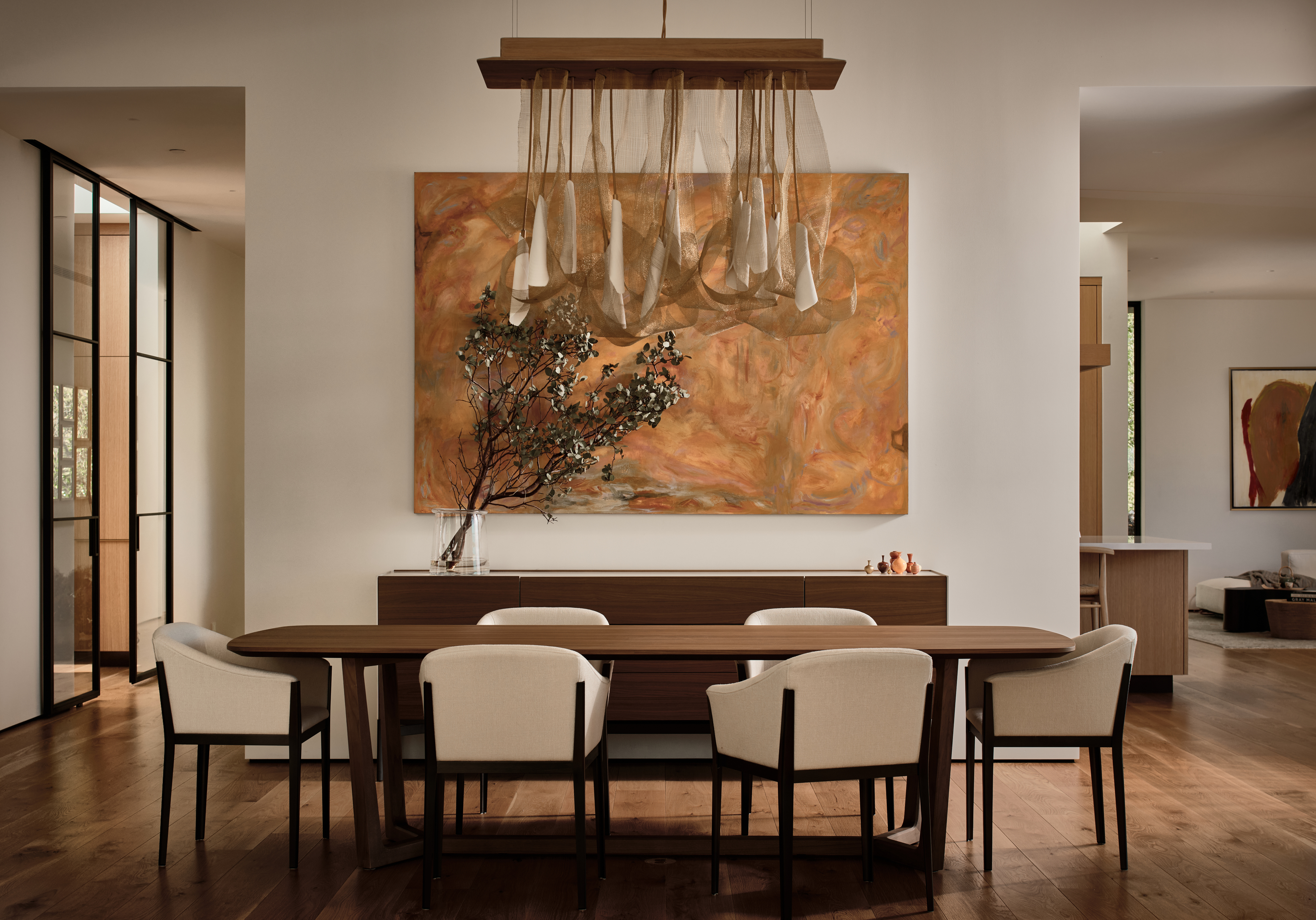
To style the buffet, remember to not overdo or overlayer it. You want it to look like a nice, smart, pleasing vignette, and not a chaotic countertop, much like in this project by Kasten Builders with interiors by Momo Wong Design. Place a vase with fresh blooms, and create a corner with tall candles. You could also simply use table runners or mats to add color to the setup; perhaps try to match the colors to the dining room wallpaper.
Less is more so keep the accessories limited, and leave some space for fresh food and glasses to be placed here during dinner parties.

Aditi Sharma Maheshwari started her career at The Address (The Times of India), a tabloid on interiors and art. She wrote profiles of Indian artists, designers, and architects, and covered inspiring houses and commercial properties. After four years, she moved to ELLE DECOR as a senior features writer, where she contributed to the magazine and website, and also worked alongside the events team on India Design ID — the brand’s 10-day, annual design show. She wrote across topics: from designer interviews, and house tours, to new product launches, shopping pages, and reviews. After three years, she was hired as the senior editor at Houzz. The website content focused on practical advice on decorating the home and making design feel more approachable. She created fresh series on budget buys, design hacks, and DIYs, all backed with expert advice. Equipped with sizable knowledge of the industry and with a good network, she moved to Architectural Digest (Conde Nast) as the digital editor. The publication's focus was on high-end design, and her content highlighted A-listers, starchitects, and high-concept products, all customized for an audience that loves and invests in luxury. After a two-year stint, she moved to the UK and was hired at Livingetc as a design editor. She now freelances for a variety of interiors publications.
